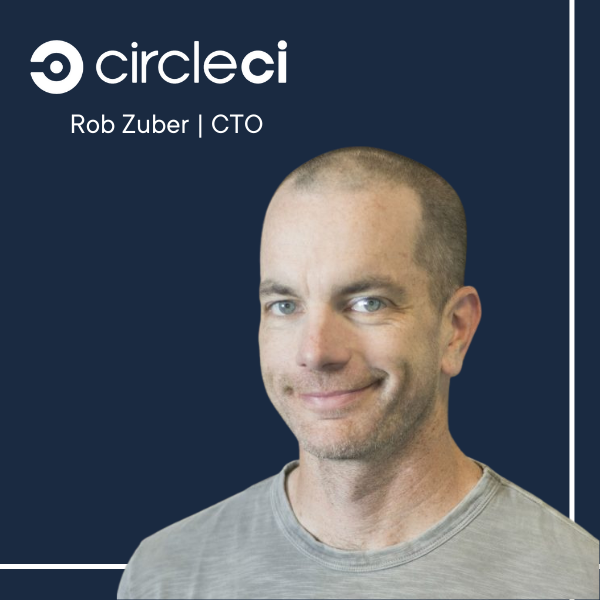How to Attract and Retain Engineering Talent Amidst the Great Resignation with Rob Zuber

The growth stage is an exciting time for a startup. Your product has moved past MVP and begun to demonstrate real market fit, customers and revenues are on the rise and VCs are flooding your inbox now more than ever. But scaling a company is about more than increasing marketing budget and adding disk space – finding experienced and dependable engineers is paramount.
However, the engineering market is maybe more competitive now than ever before. Talent shortages in the U.S. have hit a 10-year high with demand for software engineers topping the list – and expected to rise another 22% over the next decade. For startups, these complexities are compounded by the pace of the growth stage, where 2X, 3X, 4X annual organizational increases are often commonplace.
For advice on navigating these competitive waters, David Carter, Head of Sapphire’s DevOps and Infrastructure COE, sat down with Rob Zuber, CTO at portfolio company CircleCI and a 20-year tech veteran, three-time founder and five-time CTO. Rob shares best practices for attracting, retaining, and measuring the productivity of engineering talent, drawing on his years of experience maturing CircleCI into one of the dominant players in the CI/CD market, while scaling their technology organization to 300+ engineers.
Finding the right talent is as much about you as the talent
There’s a misconception that organizations need to find the “best” engineer. The truth is, the “best” engineer differs from company to company – and even within the same organization over time.
As Rob explains,“The ability to scale a distributed system to millions of users is very different from the ability to iterate quickly and build small experiments that aren't gonna take down the site. So it’s important to have real conversations within… Share on XThat makes it critical to understand who you are as a company, what you value, the skills you need and what it means to be successful in your organization before searching for an engineer. Because looking for engineers before you’ve done this work, often means running candidates through an interview loop only to find multiple interviewers disagree about what it is they’re even looking for – or worse, hiring the wrong person.
Attracting talent by positioning your organization as the destination for engineers
When it comes to attracting the right engineers, brand matters. But building a reputation and brand engineers want to join requires effort beyond just creating a product with a lot of buzz; it requires you to embed your organization in the developer community and become a helpful resource to aspiring engineers. “We talk to the market about what we see as effective software delivery, how we think about organizing our team, things that we’ve published. We tend to speak a lot at industry conferences from an engineering perspective. Not just how we’ve built things technically, but how we’ve built things in our organization,” explains Rob.
Though community involvement goes a long way to attracting engineering talent, Rob explains that organizational transparency and authenticity go hand in hand with building a developer-friendly image. “We put together a competency matrix – it’s like a career ladder, which clearly outlines what we value and put emphasis on. And we made it public for two reasons: one, we thought it was helpful to people and two, because it would give folks a sense of what it was like to work in our organization,” says Rob.
When you can combine a strong voice in the engineering community and transparent organization authenticity that backs it up, building a pipeline of talented engineers becomes a whole lot easier.
A great developer experience creates momentum
When engineers run into roadblocks, they get frustrated and they churn. And as Rob explains, one of the biggest causes of frustration engineers encounter is “when they find themselves having to learn very complex new systems in order to achieve a simple thing.”
That means arming your people with the tools, time and resources to accomplish their goals. But Rob goes on to say, there’s no one-size-fits-all solution to create this environment.
It's unlikely that a specific approach is gonna work for everybody, but saying to (team leaders and managers), ‘Here are some tools, here are some ideas, go figure it out with your folks,’ I think tends to get better outcomes. Share on XAnd when you empower your teams to solve problems fast, it creates a developer experience feedback loop: developers feel like they’re succeeding and growing and therefore they feel more motivated, which leads to more success and growth. Creating this sort of momentum amongst engineering teams alone has a big impact on how engaged teams are and how long someone will stay at your organization.
Metrics are the questions, not the answers
As leaders move further away from day-to-day engineering tasks and lose that innate sense of what’s happening, metrics become an important barometer. But here’s what many new leaders don’t understand about metrics: they don’t give you answers; they tell you that you should ask questions.
As Rob explains, It’s bananas to sit and look at a dashboard that says ‘three fewer story points were delivered by a team this week, therefore that team is the problem.' Share on XPredicting velocity is a prime example of the misalignment between metrics and reality. If you’re struggling to predict how long it takes for a team to accomplish a task, it’s not necessarily an assessment of that team’s ability. More than likely, it’s a sign of a problem in your system. The problem could be new team members who aren’t up to speed yet, parts of the system are poorly designed or there are a lot of unexpected interruptions.
Metrics help leaders identify problems, then it’s their job to dig in, understand them and solve them – is there an investment that we could make technically? Is there additional training we need? Is there a different process that we need to support our customers so they’re not an interrupter? It’s identifying these roadblocks and finding solutions to them that helps engineering leaders get more productivity out of their teams.
Continue the conversation
This is just part of a wide conversation about finding and managing engineering talent amidst the Great Resignation. Catch the full conversation between Rob Zuber, CircleCI CTO, 20-year tech veteran, three-time founder and five-time CTO and David Carter, Head of Sapphire’s DevOps and Infrastructure COE, in this episode of The Startup Guide to Growth podcast.
Disclaimer: This article is for informational purposes only. It is not an advertisement, and it is not intended to provide advice or services of any kind, and does not constitute an offer to buy or sell, nor a solicitation of any offer to buy or sell, any security or other financial instrument in any fund sponsored by Sapphire Ventures, LLC (“Sapphire”). The information contained herein is not an investment recommendation, and may not be relied on in any manner as, legal, tax, or investment advice. While Sapphire has used reasonable efforts to obtain information from reliable sources, we make no representations or warranties as to the accuracy, reliability, or completeness of third-party information presented within this document or survey itself. All metrics presented are derived from survey respondent answers only, whereby no outside sources were used in compiling the index. Metrics presented do not in any way represent official statements by Sapphire. Various content and views contained within this article and index represent those of the survey participants only, which do not necessarily reflect the views of Sapphire. Such views are subject to change at any point and do not in any way represent official statements by Sapphire. No guarantee of investment performance is being provided and no inference to the contrary should be made. Past performance is not indicative of future results.
